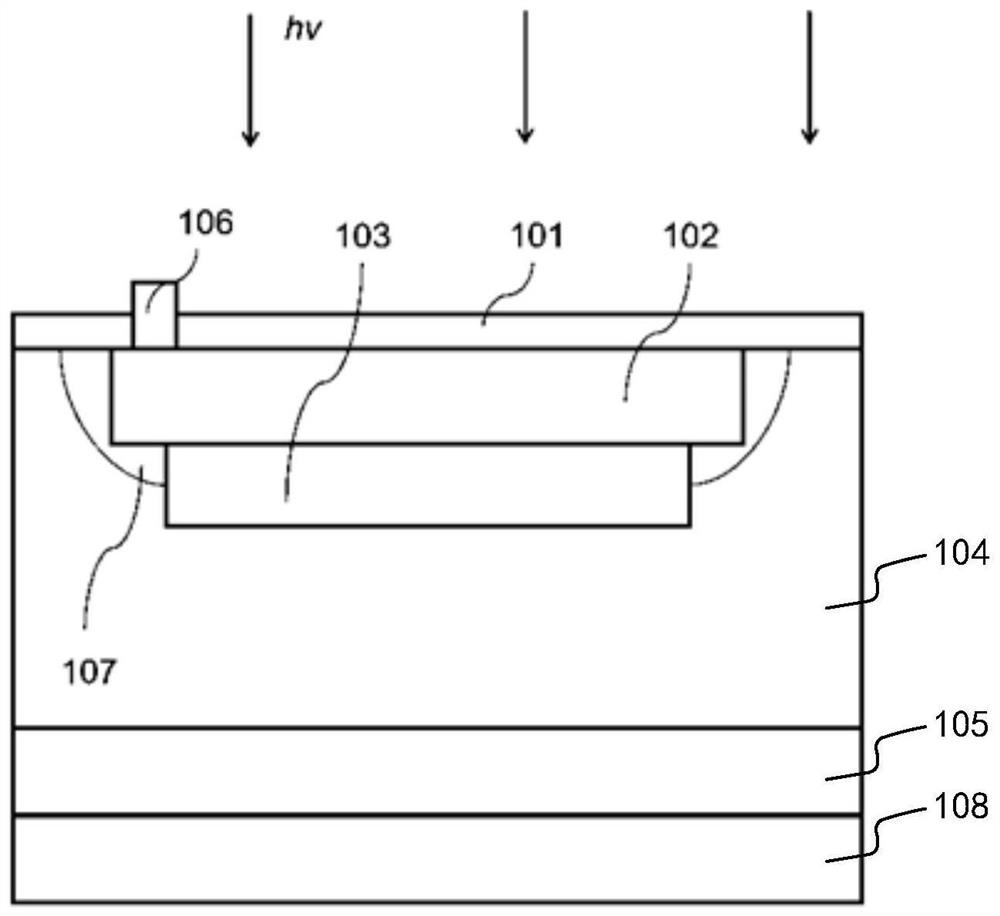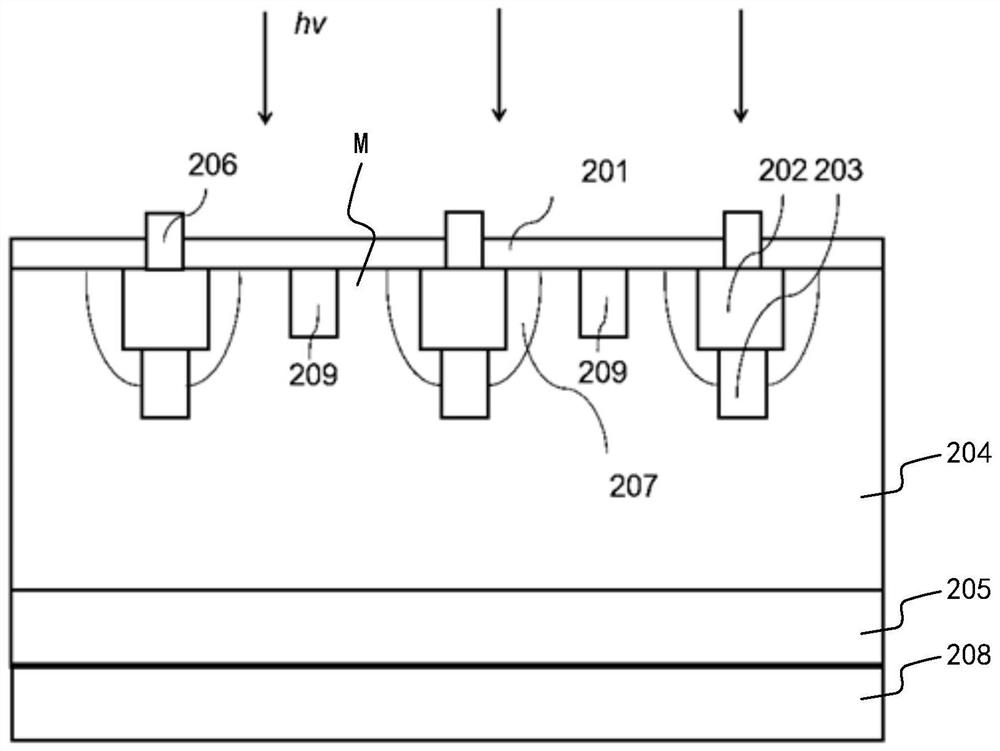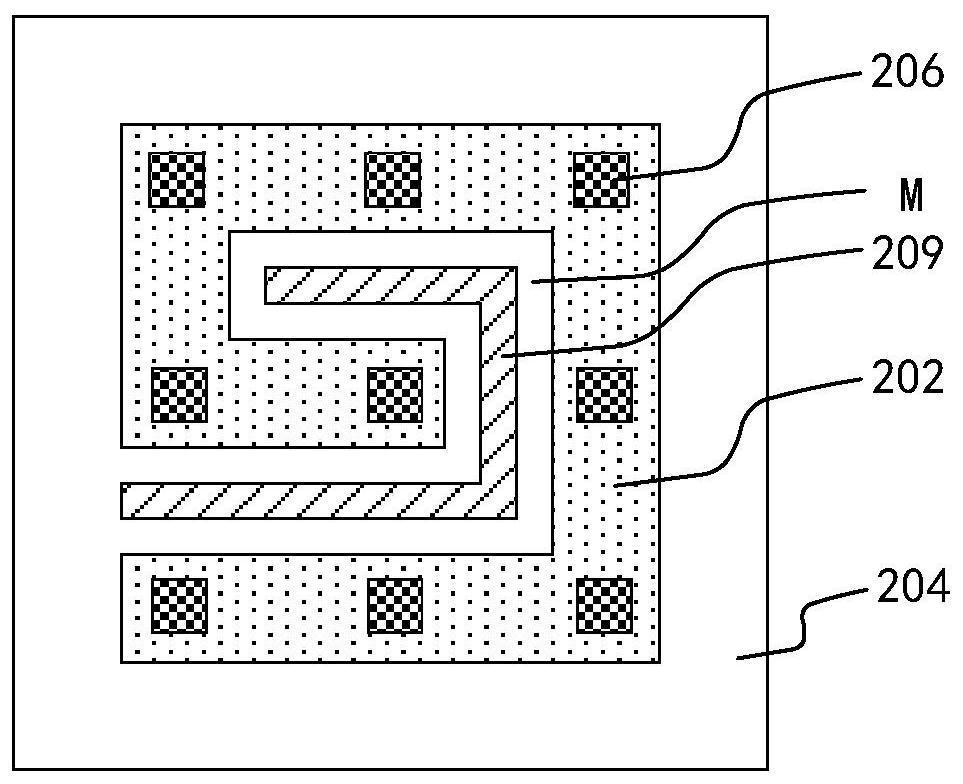Avalanche photodiode array detector
A diode array, avalanche photoelectric technology, applied in photovoltaic power generation, electric solid state devices, circuits, etc., can solve the problem of unable to suppress dark current or dark count rate of devices, and achieve the effect of reducing dark current or dark count rate
- Summary
- Abstract
- Description
- Claims
- Application Information
AI Technical Summary
Problems solved by technology
Method used
Image
Examples
Embodiment 1
[0054] see figure 2, is a schematic cross-sectional view showing a simplified structure of a single pixel structure in the avalanche photodiode array detector of this embodiment, including a first conductivity type substrate layer 205, a first conductivity type semiconductor layer 204, a PN junction, an isolation structure 209, At least one anode terminal 206 and a cathode terminal 208, wherein the first conductivity type semiconductor layer 204 is located on the first conductivity type substrate layer 205; the PN junction is located in the first conductivity type semiconductor layer 204 And includes the doped layer 203 of the first conductivity type and the doped layer 202 of the second conductivity type arranged in sequence from bottom to top, wherein the projection of the PN junction on the horizontal plane has an interval region M; the isolation structure 209 is located at the In the semiconductor layer 204 of the first conductivity type, and located in the spacer region ...
Embodiment 2
[0071] This embodiment adopts basically the same technical solution as Embodiment 1, the difference is that in Embodiment 1, the isolation structure 209 is obtained based on the doping of the first conductivity type semiconductor layer 204, while in this embodiment, the The isolation structure 209 adopts a trench structure.
[0072] see Figure 7 , which is a schematic cross-sectional view showing a simplified structure of a single pixel structure in the avalanche photodiode array detector in this embodiment, wherein the isolation structure 209 includes a trench 209a and an isolation material filled in the trench 209a 209b, the trench 209a is opened from the top surface of the first conductivity type semiconductor layer 204 and extends downward, and the bottom surface of the trench is higher than the bottom surface of the PN junction.
[0073] As an example, the trench 209a can be obtained by wet etching the semiconductor layer 204 of the first conductivity type, and the side...
Embodiment 3
[0076] This embodiment adopts basically the same technical solution as Embodiment 1 or Embodiment 2, the difference is that in Embodiment 1 or Embodiment 2, the spacer region M does not completely separate the PN junction, and the PN junction The junction is still a whole, but in this embodiment, the spacer region M divides the PN junction into at least two independent parts located in the first conductivity type semiconductor layer 204 .
[0077] It should be pointed out that although the PN junction includes at least two independent parts located in the first conductivity type semiconductor layer 204 , these independent parts are electrically connected together through the anode terminal 106 .
[0078] In summary, in the avalanche photodiode array detector of the present invention, the projection of the PN junction of a single pixel on the horizontal plane has a spacer region, so that the partial region of the PN junction is in a separated state, and is isolated by an isolati...
PUM
 Login to View More
Login to View More Abstract
Description
Claims
Application Information
 Login to View More
Login to View More - R&D
- Intellectual Property
- Life Sciences
- Materials
- Tech Scout
- Unparalleled Data Quality
- Higher Quality Content
- 60% Fewer Hallucinations
Browse by: Latest US Patents, China's latest patents, Technical Efficacy Thesaurus, Application Domain, Technology Topic, Popular Technical Reports.
© 2025 PatSnap. All rights reserved.Legal|Privacy policy|Modern Slavery Act Transparency Statement|Sitemap|About US| Contact US: help@patsnap.com



